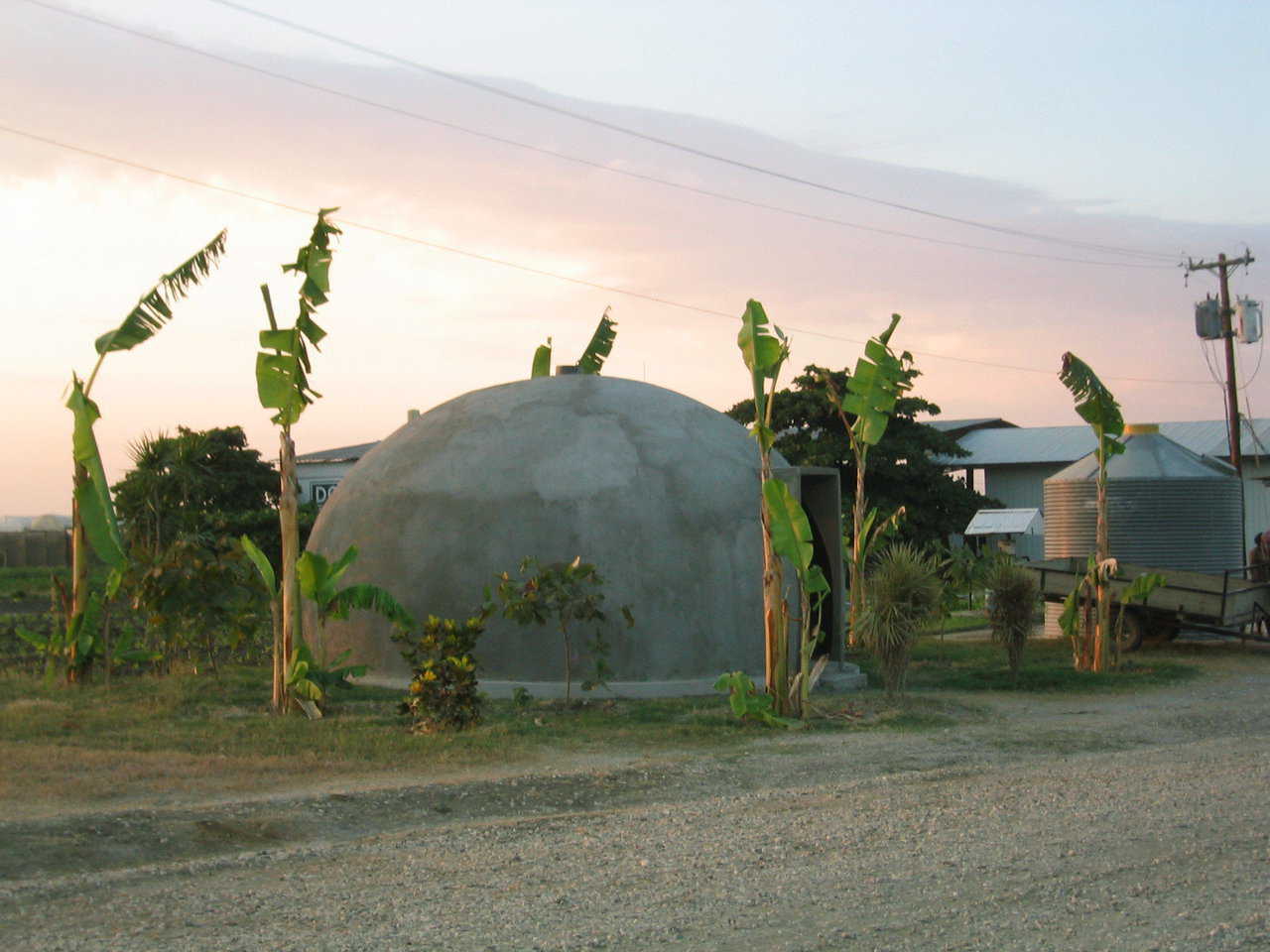The Monolithic EcoShell
At times, we have repented of teaching people how to build EcoShells.
Here’s why: The EcoShell is the epitome of a thin shell concrete structure. It’s the best building, if you want a storage shed or ultra low-cost housing. An EcoShell can be built with few materials. Generally, it consists of a rebar cage imbedded in two inches of concrete, with a simple roof coating over the outside. Low production costs enable EcoShells to compete with metal buildings. Yet EcoShells have the advantage of being much stronger and longer lasting.
HOWEVER, an EcoShell is not a substitute for a Monolithic Dome.
We get calls and letters regularly from people who want to build an EcoShell as their residence. If the alternative is nothing more than a metal tent, then an EcoShell is a good choice. But if what they want is a home for temperate climates, they must forego the idea of EcoShell. It will never be equal to a Monolithic Dome, nor is it a good substitute.
The EcoShell works as practical housing only in equatorial climates where the temperature fluctuates from very hot to hot. In less developed countries where cheap, permanent structures are greatly needed, EcoShells often can fill the bill.
But let me state again: the EcoShell is NOT an alternative for housing in U.S. climates — except for Hawaii.
The Monolithic Dome
A Monolithic Dome starts with an Airform that remains on its outside, acts as a single-ply roof membrane, and is the dome’s first line of defense against leaks.
Many potential customers want to peel off the Airform and re-use it. I have done so. And I learned that you will spend more money removing, repairing, and recoating than you will if you leave the Airform in place. Once off, it must be replaced by a coating of equal value. But there are no coatings that are as strong, tough and permanent.
As with the Airform, there is no substitute for a Monolithic Dome’s urethane foam insulation. The use of any other material will not produce as good results. Urethane on the outside of the concrete allows the concrete to store an enormous amount of heat very effectively. This thermal fly wheel effect added to the urethane’s superior insulation is why heating and cooling loads are so vastly reduced in Monolithic Domes.
Many want to skip some of the Monolithic process and still derive the same benefits. We have not figured out how to do that.
Alternatives and Suggestions
Certainly, if you are talking, ultra low-cost housing, you can build an EcoShell. It is best built in a warm climate, such as Mexico or Africa. Some insulation value can be derived by covering an EcoShell with thatching.
Then too, we can build an EcoShell, spray the outside with urethane foam insulation, then coat over the urethane. In general such an EcoShell appears to be the same structure as a Monolithic Dome – but not really. Its construction is more difficult, it will never be as well controlled or as well constructed, and it will cost at least as much money – if not more.
We know that there are people building EcoShells, covering them with straw bales and then building another EcoShell over the outside of the first. This can be done. It is doubtful that it will save money, and there are problems with the details for doors and windows. Lastly, if it isn’t done just perfectly, it will leak when completed. But it will be energy efficient as long as the straw lasts and that may be a long, long time.
We suggest that If the cost of a new home is too high, make it smaller. But in the final analysis, each client has the option to build whatever he or she wants.
We are not trying to be dictatorial. We know that there are still a lot of good ideas that haven’t been thought of. We want to support you in reaching your goal. Our classes and training tapes teach our proved methods. We are happy to share this information.
But please remember: an EcoShell and a Monolithic Dome each has its proper use. And remember too that EcoShell I and EcoShell II also differ in construction and purpose.
We all know the drill. If we want a cheap shirt we do not go to an expensive store. We all know the difference. If we want a cheap building we can not get it without sacrificing something. In our case it is several things. That does not mean we don’t buy the cheap shirt or the building. It just means we use our head and weigh out the costs and advantages.
We have been working hard to get the price down and the quality up from the beginning. The Monolithic Dome if built conventionally would cost several times more money. We invented a way to hold its costs down. The same is true for the EcoShell. But there is a place where we can not go at least yet. The options are mud huts, tents, etc. We are working on an insulating concrete to build the EcoShells but it will still never match a Monolithic Dome for energy efficiency. We know of nothing that will.
EcoShell I: Shotcrete is applied on the exterior of the Airform.
EcoShell II: Shotcrete is applied on the interior of the Airform.
